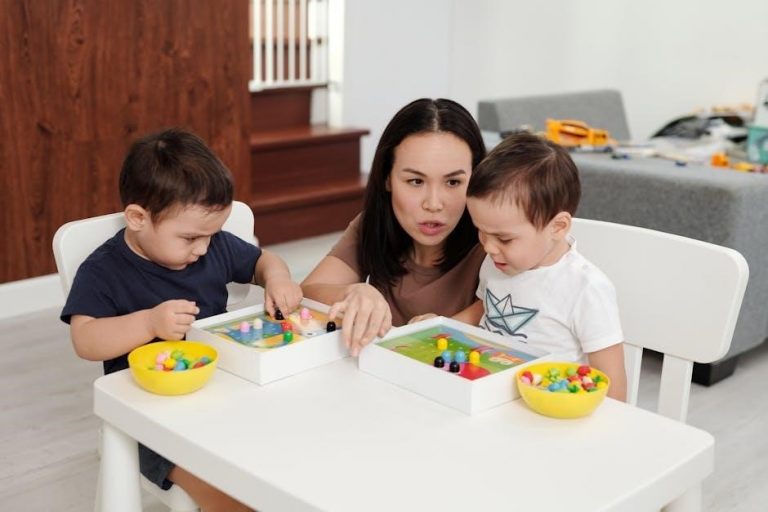
Shrimp are increasingly popular aquarium pets due to their striking beauty and calm nature․ They thrive in well-maintained tanks, making them ideal for both beginners and experienced aquarists․
1․1 Why Shrimp Make Great Aquarium Pets
Shrimp are captivating, low-maintenance pets ideal for aquarium enthusiasts․ Their small size, calm nature, and vibrant colors make them perfect for desktop tanks․ They thrive in stable environments, requiring minimal space and care․ With proper setup, shrimp are hardy and long-lasting, offering endless entertainment as they swim and forage․ Their peaceful demeanor also makes them excellent community tank members when paired with compatible species․
1․2 Brief Overview of Shrimp Care Basics
Shrimp care involves maintaining stable water conditions, proper feeding, and regular tank maintenance․ A shrimp-only tank or one with peaceful fish is ideal․ Provide slightly acidic water (pH 6․5-7․5) and temperatures between 65-75°F․ Feed high-quality foods like algae, pellets, or flakes, and avoid overfeeding․ Regular water changes (15-20% every 2-3 weeks) and equipment checks ensure optimal health and thriving shrimp populations․
Housing and Environment
Provide a shrimp-only tank or one with peaceful fish, ensuring stable water parameters (pH 6․5-7․5, 65-75°F) and ample vegetation for a thriving environment․
2;1 Tank Setup and Equipment Recommendations
A minimum tank size of 5 gallons is recommended for shrimp, equipped with a secure lid to prevent jumping․ Use a high-quality heater to maintain stable temperatures and a reliable filter, such as a sponge filter, to ensure gentle water flow․ Avoid metal equipment that may rust․ Incorporate a substrate like sand or gravel, and add decorations such as plants, driftwood, and rocks to provide hiding places and enrichment․ Ensure proper aeration and surface agitation for oxygenation․ Live plants are highly beneficial for water quality and shrimp health․ Avoid overcrowding and ensure adequate space for movement․ Regularly inspect equipment to maintain optimal conditions․
2․2 Substrate, Decorations, and Water Flow Preferences
Use a fine-grained substrate like sand or gravel, as it’s easy to clean and comfortable for shrimp․ Incorporate decorations such as live plants, driftwood, and rocks to create hiding places and visual enrichment․ Shrimp prefer gentle water flow, so avoid strong currents․ A sponge filter is ideal for maintaining calm conditions․ Ensure plenty of surface agitation for oxygenation, and mimic natural habitats with varied textures and structures․

Feeding and Nutrition
Shrimp thrive on a diverse diet including high-quality flakes, pellets, and algae․ Feed 2-3 times weekly, only what they can consume in 2-3 hours․ Avoid overfeeding to prevent water quality issues․
3․1 Best Foods for Shrimp (Pellets, Flakes, Algae)
Shrimp thrive on a varied diet of high-quality pellets, flakes, and algae․ Aqueon Tropical Flakes and Spirulina Flakes are excellent choices, while algae rounds provide essential fiber․ Shrimp pellets are nutrient-rich and should be soaked before feeding to aid digestion․ Dried river shrimp and bottom feeder tablets can also be offered as treats․ A balanced diet ensures vibrant colors, health, and longevity for your aquarium shrimp․
3․2 Feeding Frequency and Portion Control
Feed shrimp small amounts daily, ensuring all food is consumed within a few hours․ Overfeeding can lead to ammonia spikes․ Provide high-quality pellets or flakes in the evening when shrimp are most active․ Remove uneaten food promptly․ Avoid feeding during tank maintenance or water changes․ Shrimp can survive without food for short periods, so portion control is key to maintaining water quality and their health․

Water Quality and Maintenance
Monitor ammonia, nitrate, and nitrite levels regularly․ Maintain stable water parameters with a temperature of 65-75°F and pH 6․5-7․5․ Perform 15-20% water changes every 2-3 weeks to ensure optimal conditions․
4․1 Ideal Water Parameters (pH, Temperature, Hardness)
The ideal water parameters for shrimp include a pH range of 6․5-7․5, temperature between 68-74°F, and moderate water hardness․ These conditions mimic their natural habitats, promoting health and longevity․ Proper filtration and regular testing are essential to maintain these stable parameters, ensuring the shrimp thrive in their environment․
4․2 Water Change Schedule and Techniques
Regular water changes are crucial for maintaining optimal water quality․ Perform a 15-20% water change every 2-3 weeks, using a gravel vacuum to remove debris․ Replace with dechlorinated water matching the tank’s temperature and parameters․ This prevents stress and keeps ammonia levels low, ensuring a healthy environment for your shrimp․ Consistency is key to their well-being․ Always monitor water conditions before and after changes․
Breeding and Reproduction
Successful shrimp breeding requires specific conditions, including a separate breeding tank with stable water parameters and proper equipment․ Monitor maturity signs and behavior closely for optimal results․
5․1 Setting Up a Breeding Tank
A breeding tank should be a species-only setup to protect shrimp from predators․ Maintain stable water parameters, with temperatures between 65-75°F and pH 6․5-7․5․ Use a high-quality filter and ensure ample surface agitation for oxygenation․ Introduce plants for shelter and spawning sites․ Regular water changes (15-20%) every 2-3 weeks are crucial․ Equipment like the Fluval EBI Nano Aquarium is ideal for optimal breeding conditions․
5․2 Recognizing Signs of Maturity and Breeding Behavior
Mature shrimp often display vibrant coloration and active movement․ Females may carry eggs under their abdomen, signaling readiness to breed․ Males exhibit energetic behavior, chasing females․ Optimal conditions, such as stable water parameters and a species-only tank, encourage breeding․ Regular feeding with nutrient-rich foods, like algae or pellets, supports reproductive health and increases spawning success in cherry and bee shrimp․
Health and Disease Management
Shrimp are generally hardy but can succumb to issues like poor water quality or parasites․ Regular water changes and a balanced diet are key to maintaining their health and preventing diseases, ensuring a thriving aquarium environment for these small but vibrant creatures․
6․1 Common Health Issues in Shrimp
Shrimp often face health issues due to poor water quality, parasites, or bacterial infections․ Common problems include shell rot, fungal growth, and color loss․ Monitoring water parameters and maintaining a clean environment is crucial․ Signs of illness may include lethargy, unusual behavior, or visible damage to their exoskeleton․ Early detection and proper treatment are essential to prevent the spread of disease in the aquarium․

6․2 Prevention and Treatment of Diseases
Preventing shrimp diseases involves maintaining stable water parameters, regular water changes, and avoiding overcrowding․ Ideal water conditions include temperatures between 65-75°F and pH levels of 6․5-7․5․ Proper filtration and adequate water flow also help prevent illness․ Treatments may include water changes, using specific medications, or isolating infected shrimp․ Quarantining new additions and monitoring behavior can prevent the spread of disease effectively․


Choosing the Right Shrimp Species
Selecting the right shrimp species depends on experience level and tank conditions․ Red Cherry Shrimp and Bee Shrimp are popular for their vibrant colors and hardiness․ They adapt well to aquariums with stable water parameters, making them ideal for both beginners and experienced aquarists․ Proper research ensures compatibility and a thriving environment for your chosen species․
7․1 Popular Species for Beginners (e․g․, Cherry Shrimp, Bee Shrimp)
Red Cherry Shrimp (RCS) and Bee Shrimp are excellent choices for beginners due to their vibrant colors, hardiness, and ease of care․ RCS thrive in well-oxygenated, slightly acidic water, making them ideal for small aquariums․ Bee Shrimp, known for their unique patterns, are equally adaptable and breed readily in stable conditions․ Both species are forgiving for newcomers, ensuring a rewarding start to shrimp keeping․
7․2 Characteristics and Care Requirements of Different Species
Species like Amano Shrimp are prized for their algae-eating abilities and thrive in cooler temperatures․ Meanwhile, Sulawesi Shrimp require warmer, more alkaline conditions․ Each species has unique needs, such as specific pH levels or feeding habits, making it crucial to research their requirements before adding them to your aquarium․ Proper care ensures their health and longevity in captivity․
Shrimp can coexist with peaceful fish like ember tetras or corydoras in a community aquarium․ Ensure plenty of vegetation and stable water conditions for harmony and health․

Tankmates and Community Aquariums
8․1 Compatible Fish and Invertebrates
Shrimp can thrive with small, peaceful fish like ember tetras or corydoras, and non-aggressive invertebrates such as snails․ Avoid predators to protect baby shrimp․ A planted tank with stable conditions ensures harmony for all inhabitants, fostering a balanced ecosystem where shrimp and tankmates coexist peacefully․
8․2 Avoiding Predatory or Aggressive Tankmates
Avoid placing shrimp with predatory or aggressive fish, as they may view shrimp as prey․ Large fish, aggressive invertebrates, and fin-nippers can stress or harm shrimp․ Baby shrimp are especially vulnerable, so keeping them in a species-only tank is often recommended․ Stress from predators can weaken shrimp health and reduce breeding success, making careful tankmate selection crucial for a thriving shrimp colony․

Common Mistakes to Avoid
Common mistakes include overcrowding tanks, improper water changes, and ignoring water parameter stability․ These errors can lead to stress, disease, and reduced shrimp lifespan․ Regular monitoring is essential․
9․1 Overcrowding and Inadequate Space
Overcrowding is a common mistake that stresses shrimp, leading to disease and reduced survival rates․ Ensuring adequate space per shrimp is crucial for their health and well-being․ A general rule is to stock 1-2 shrimp per gallon․ Proper spacing prevents competition for resources and maintains water quality․ Always research species-specific needs to avoid overcrowding issues․
9․2 Improper Water Changes and Parameter Fluctuations
Improper water changes and fluctuating water parameters can severely stress shrimp․ Regular, small water changes of 15-20% every 2-3 weeks are recommended․ Sudden shifts in pH, temperature, or hardness can be deadly․ Use a drip system for stability and test parameters regularly to maintain a safe environment for your shrimp․
